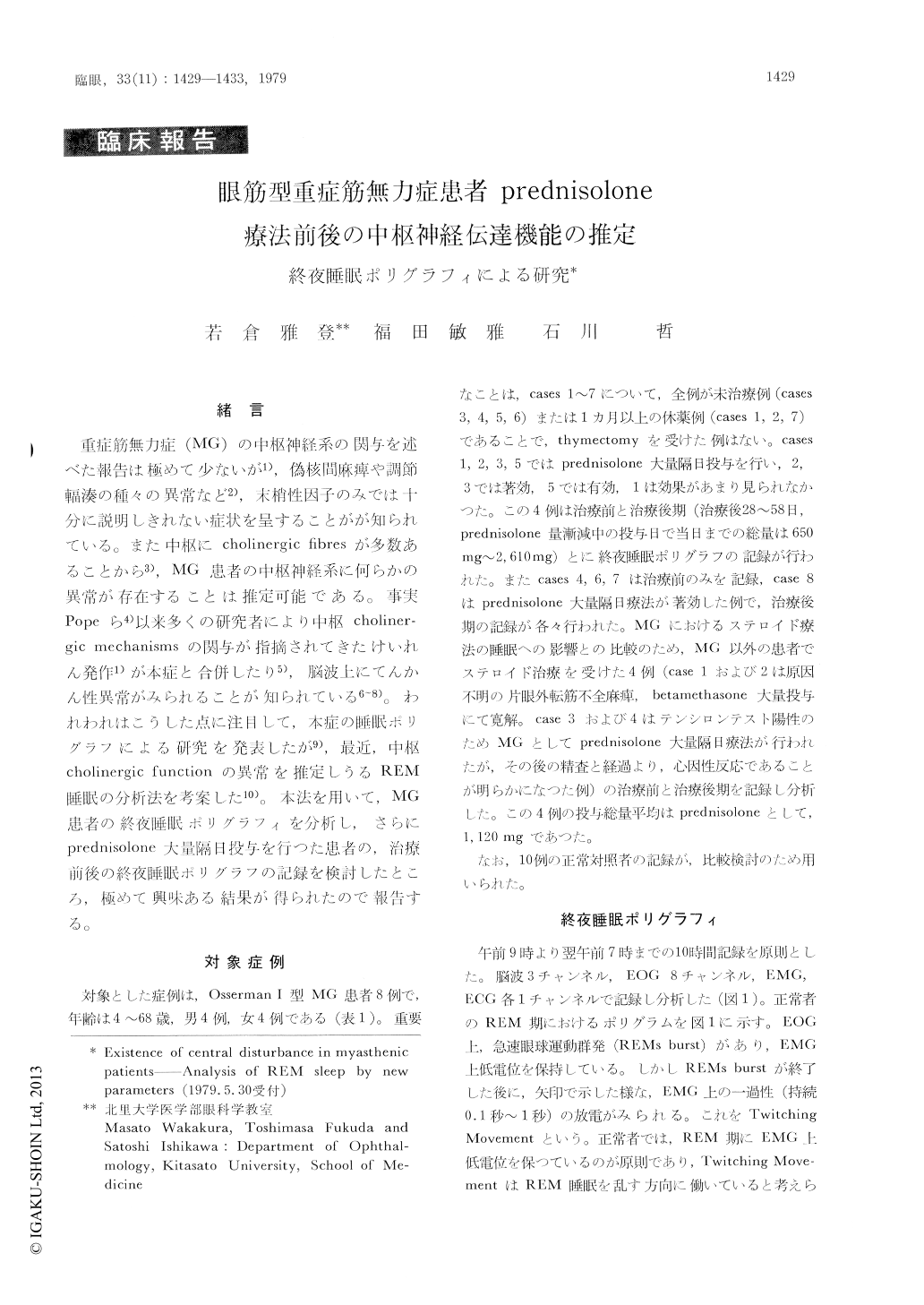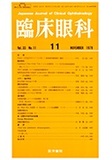Japanese
English
- 有料閲覧
- Abstract 文献概要
- 1ページ目 Look Inside
緒 言
重症筋無力症(MG)の中枢神経系の関与を述べた報告は極めて少ないが1),偽核間麻痺や調節輻湊の種々の異常など2),末梢性因子のみでは十分に説明しきれない症状を呈することがが知られている。また中枢にcholinergic fibresが多数あることから3),MG患者の中枢神経系に何らかの異常が存在することは推定可能である。事実Popeら4)以来多くの研究者により中枢choliner-gic mechanismsの関与が指摘されてきたけいれん発作1)が本症と合併したり5),脳波上にてんかん性異常がみられることが知られている6〜8)。われわれはこうした点に注目して,本症の睡眠ポリグラフによる研究を発表したが9),最近,中枢cholinergic functionの異常を推定しうるREM睡眠の分析法を考案した10)。本法を用いて,MG患者の終夜睡眠ボリグラフィを分析し,さらにprednisolone大量隔日投与を行つた患者の,治療前後の終夜睡眠ボリグラフの記録を検討したところ,極めて興味ある結果が得られたので報告する。
Possible involvement of the central nervous system in patients with myasthenia gravis (MG) has been described in a previous report using sleep polygraphy. The method of analyses was not satisfactory and the conclusions were still undecisive.
In order to examine the central cholinergic function in more detail, we used a nocturnal polygraphy with new method of analysis. In addition to the routine analyses, a new parameters of twitching frequency (T-F) and twitching-burst (T-B) index was employed for the analysis of sleep. The parameters was adopted to detect the eREM central cholinergic disturbance.

Copyright © 1979, Igaku-Shoin Ltd. All rights reserved.


